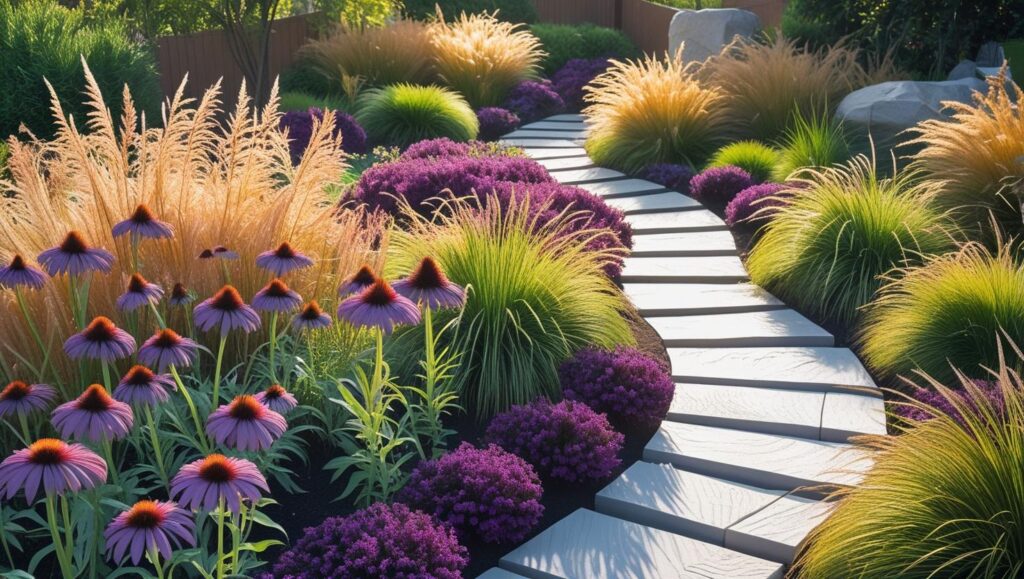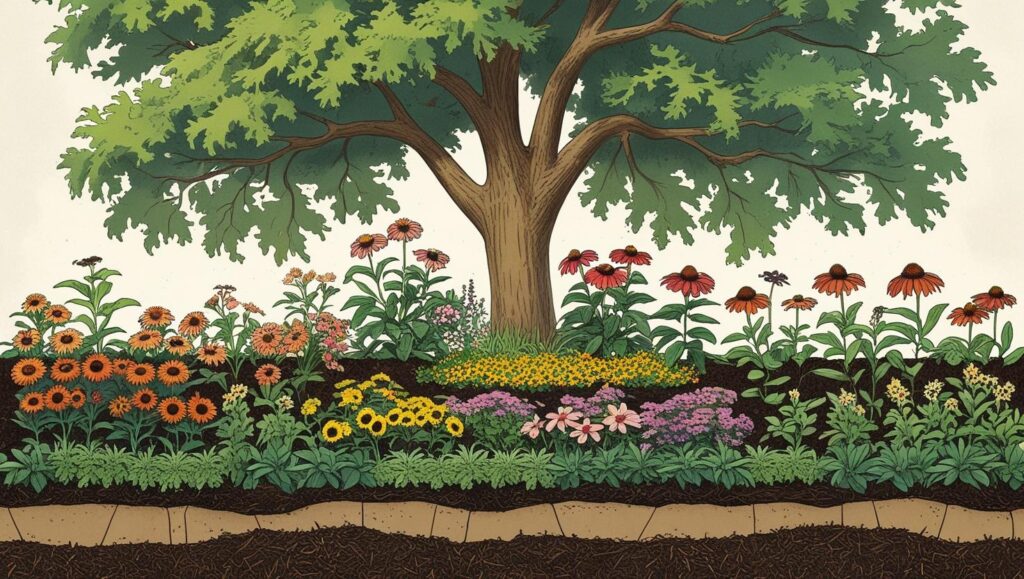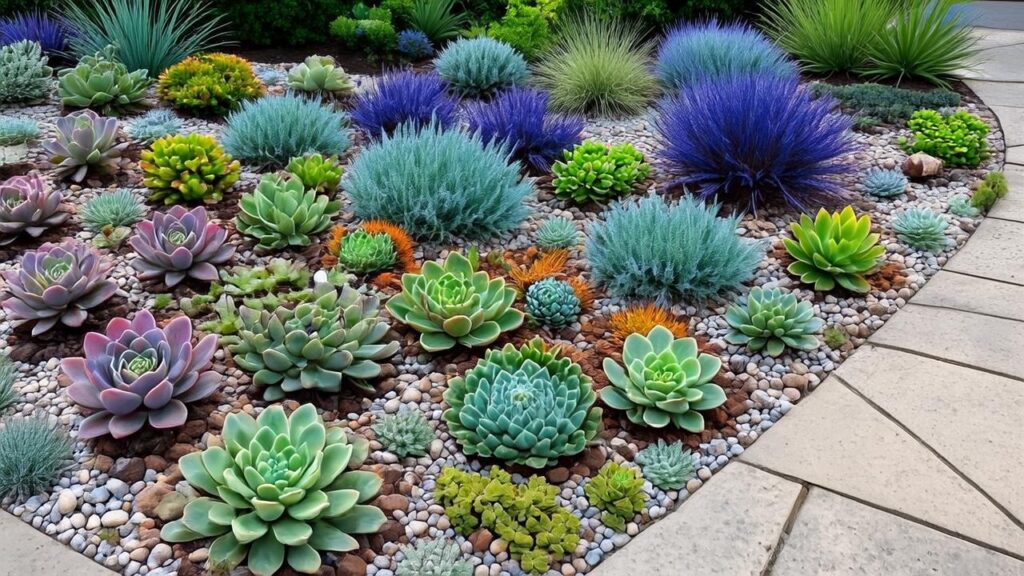Homeowners globally are increasingly trading manicured turfgrass for more dynamic and ecologically sound landscapes, driving a significant shift in residential design. This movement away from the traditional lawn is giving rise to a host of creative front yard garden ideas that prioritize biodiversity, water conservation, and personal expression. Experts in landscape architecture and horticulture are championing new approaches that are not only aesthetically pleasing but also beneficial to the environment.

This transformation is fueled by a growing awareness of the ecological costs of lawn maintenance and a desire for more personalized outdoor spaces. “A garden is not a landscape, but a place that allows us to dream in nature,” said Piet Oudolf, the influential Dutch designer known for his work on the High Line in New York City. His philosophy, which emphasizes a plant’s entire lifecycle, is inspiring a new generation to create gardens that are beautiful in all seasons.
The focus is shifting from high-maintenance ornamentation to creating resilient, layered, and meaningful green spaces. This article explores nine innovative concepts, supported by expert advice, to help homeowners refresh and reimagine their front yards.
1. The Naturalistic Meadow: An Ode to the Wild
Inspired by the work of designers like Piet Oudolf, the naturalistic meadow brings a soft, untamed beauty to the front yard. This style uses a mix of native grasses and hardy perennials to create a tapestry of color and texture that evolves with the seasons. The key is selecting plants for their structure and form, not just their flowers, ensuring visual interest even in winter.
According to Oudolf’s design principles, the beauty lies in the rhythm and repetition of plant forms. This approach fosters a habitat for pollinators and requires significantly less water and intervention than a traditional lawn once established.
2. Planting in Layers: Creating a Resilient Ecosystem
The concept of layered planting, championed by landscape architects Thomas Rainer and Claudia West, is central to modern, sustainable garden design. In their influential book, Planting in a Post-Wild World, they advocate for designing plant communities that mimic how plants grow in nature. “In nature you rarely see bare soil at all,” Rainer noted in an interview with A Way to Garden. “By continuing to add mulch in our gardens, we’re effectively preventing the plants from establishing a real community there.”
This method involves three primary layers:
- Structural Layer: Trees and shrubs that form the backbone of the garden.
- “Design” Layer: Showy perennials and grasses that provide seasonal color and texture.
- Groundcover Layer: Low-growing plants that act as a “green mulch,” suppressing weeds and retaining soil moisture.
This approach creates a dense, interlocking system that is largely self-sustaining and resilient to pests and climate stress.

3. The “Know-Maintenance” Garden Community
For those seeking a beautiful garden without constant upkeep, the “know-maintenance” approach developed by plantsman Roy Diblik offers a structured solution. In his book, The Know Maintenance Perennial Garden, Diblik presents patterns for combining complementary plants that thrive together as a community. “Diblik has codified a naturalistic, yet artistic, approach to building garden beds,” noted Country Gardens magazine.
The method involves selecting a palette of hardy, long-lived perennials and arranging them in a grid-based pattern that allows them to intermingle and support one another, effectively reducing the need for weeding, staking, and excessive watering.
4. The Bold and Simple Statement
Over-complication is a common design pitfall. Landscape designer Dan Pearson advises homeowners to avoid making “too many small spaces, or using too many different species of plants.” Instead, he advocates for making a bold, simple statement. This could involve using a limited palette of plants in large, impactful drifts or investing in a single mature tree as a focal point.
This minimalist approach creates a stronger, more memorable sense of place and can make a small front yard feel larger and more intentional.
5. Edible Landscapes: Beauty and Bounty
The trend of integrating edible plants into ornamental landscapes continues to grow. A front yard vegetable and herb garden, once relegated to the backyard, is now a stylish and practical choice. Raised beds made from attractive materials like corten steel or cedar can frame plots of colorful lettuces, herbs, and fruiting shrubs.
According to the University of Minnesota Extension, incorporating edible plants can be part of a diverse and healthy yard ecosystem. This approach not only provides fresh produce but also fosters a deeper connection to food systems.
6. The “PRFCT” Yard: A Move Toward Toxin-Free Gardening
Landscape designer Edwina von Gal, founder of the Perfect Earth Project, advocates for a complete move away from synthetic pesticides and fertilizers. Her “PRFCT” landscaping principles promote creating beautiful gardens that are safe for people, pets, and the planet. This involves using native plants, composting, and adopting natural pest management techniques.
“In terms of ecological or climate anxiety, I think gardening is the antidote,” von Gal stated in an interview with Time Sensitive podcast. Creating a toxin-free landscape supports local wildlife, particularly birds, which rely on insects found in native plantings.

7. Modern Xeriscaping: Water-Wise and Stylish
In arid climates and regions facing water restrictions, xeriscaping is a necessity, but it doesn’t have to be barren. Modern xeriscaping uses a combination of drought-tolerant plants, such as succulents, yuccas, and ornamental grasses, with striking hardscape elements like gravel, decomposed granite, and boulders.
The key to a successful xeriscape is thoughtful design that groups plants with similar water needs and uses hardscaping to create clean lines and visual interest. The Royal Horticultural Society (RHS) suggests that even in wetter climates, reducing water usage by choosing permeable paving and drought-resistant plants is a sound ecological practice.
8. The Woodland Garden: Embracing Shade and Structure
For homes with mature trees, a woodland garden is a natural fit. This style embraces shady conditions, using plants like ferns, hostas, hellebores, and native groundcovers to create a lush, serene environment. The University of Minnesota Extension‘s guide to healthy yards recommends using layers—canopy trees, understory trees, and shrubs—to create a diverse habitat.
Adding a simple path of stone or woodchips invites exploration and enhances the feeling of a natural woodland retreat. This style is exceptionally low-maintenance once established, as the dense planting helps to suppress weeds naturally.
9. The Welcoming Walkway Garden
The path to the front door presents a prime opportunity to create an immersive garden experience. Instead of a narrow strip of grass, consider widening the borders to allow for generous planting on either side. A fragrant border with plants like lavender, rosemary, or sweet alyssum can create a sensory welcome.
The RHS recommends using containers and vertical elements like climbers on walls or trellises to add interest, especially in smaller spaces. Symmetrical plantings can frame an entryway and create a sense of formal elegance, while an asymmetrical design can offer a more relaxed, modern feel.
As homeowners continue to seek more from their outdoor spaces, the front yard is evolving from a static symbol of homeownership into a dynamic, personal, and ecologically significant garden. This shift represents not just a trend in landscaping, but a deeper engagement with the natural world, one front yard at a time.
Experts Identify Best Grasses for Erosion Control Amid Worsening Soil Losses
